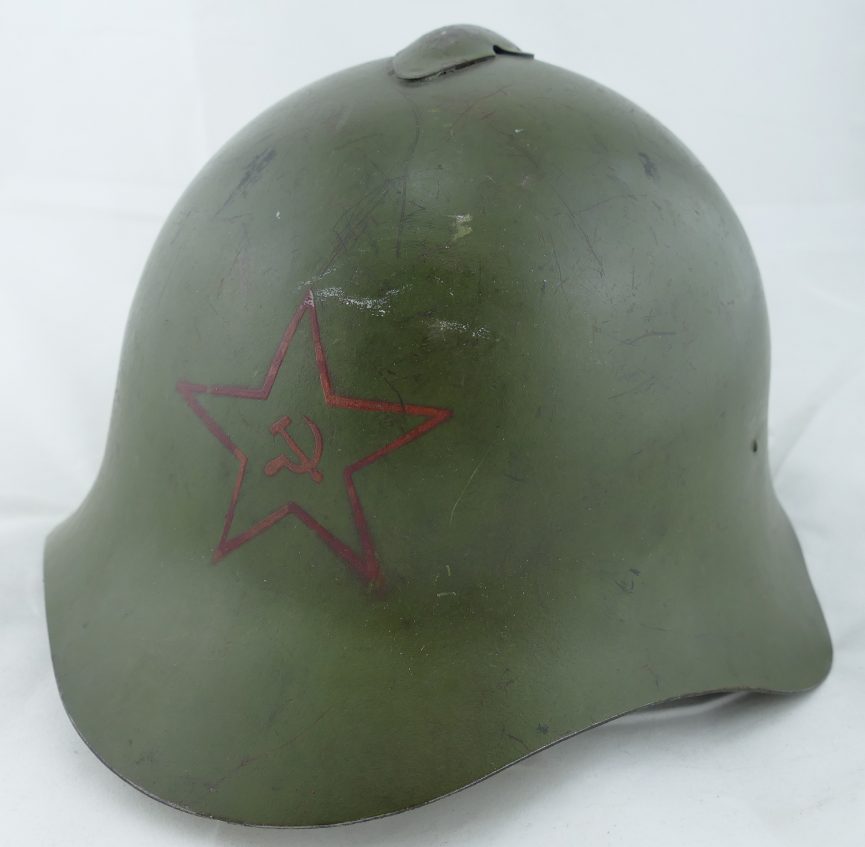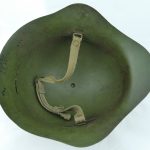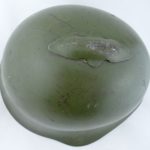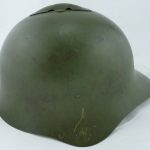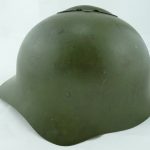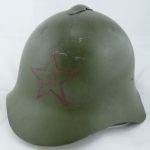Note: This item sold in our shop in January 2017.
In today’s post, we’ll be looking at a rarely seen item – the Soviet M-36 steel battle helmet. Original Soviet militaria from WWII and before is generally uncommon in the United States for a number of reasons:
- The American and Soviet Armies did not have a lot of interaction in the War, so there was limited opportunity for trade of equipment.
- The political situation after the War made importation of Soviet equipment into the United States problematic at best.
- Today, the Russian Government has cracked down on the exportation of their country’s WWII items, declaring them to be “national treasures.”
The few items that have made it into US collections generally seem to have come from the Soviet Union in the early 1990’s, when the political situation in Russia meant a free-for-all, with even museums selling their inventory for American dollars.
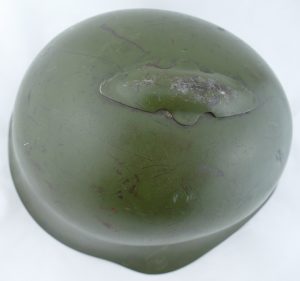 The Model 36 helmet was made from 1936 until 1941, so it saw service in such famous encounters as the Khalkin Gol campaign against the Japanese in 1939, the Finnish Winter War of 1940-41, and the opening years of WWII.
The Model 36 helmet was made from 1936 until 1941, so it saw service in such famous encounters as the Khalkin Gol campaign against the Japanese in 1939, the Finnish Winter War of 1940-41, and the opening years of WWII.
The M36 is easy to distinguish from other Soviet Helmets because of the large front rim and wide ear flares. Some will have a red Hammer & Sickle in a star on the front, but others will be plain. Obviously collectors tend to gravitate more towards helmets with the star, as these are iconic symbols of the Red Army. However, a helmet lacking the red star is still very collectible.
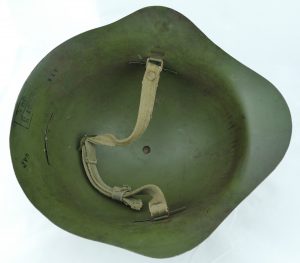 The M36 was the last of the Soviet helmets to have a top crest. Stories are told of how these crests were in place to deflect saber blows, but a more prosaic reason is probably to provide ventilation.
The M36 was the last of the Soviet helmets to have a top crest. Stories are told of how these crests were in place to deflect saber blows, but a more prosaic reason is probably to provide ventilation.
Originally, the M36 was issued with a leather liner and chinstrap, neither of which held up well in service. These were soon replaced with a cloth liner and cloth chinstrap. The example pictured here has the original cloth chinstrap, but lacks the liner. Many of these helmets that saw combat had their liners removed by soldiers so that a fur cap (ushanka) or budenovka could be worn underneath.
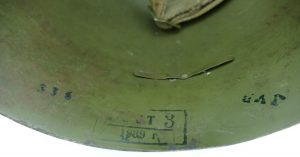 The helmet pictured here has a maker’s mark which appears to be a Cyrillic “CT,” showing production at Stalingradskiy Traktorskiy (Stalingrad Tractor Factory) in 1939. It retains nearly all of its original green paint, with only relatively minor scuffs.
The helmet pictured here has a maker’s mark which appears to be a Cyrillic “CT,” showing production at Stalingradskiy Traktorskiy (Stalingrad Tractor Factory) in 1939. It retains nearly all of its original green paint, with only relatively minor scuffs.
Most of these helmets today survive in poor or near relic condition, and they are being reproduced. These were heavy battle helmets, and when contemplating purchase, most of the reproductions are somewhat light and flimsy. Notice should also be taken of the red star (if present). A battle-worn helmet with a bright red star should give some pause, as wear should be even throughout. Use your best judgement, and if your first instinct is to walk from the deal, trust your gut!
More Images:
Do you have an item like this one that you are interested in selling?
We purchase collectible firearms and military antiques every day at Pony Express Firearms – please contact us today if you would like to sell your item!

